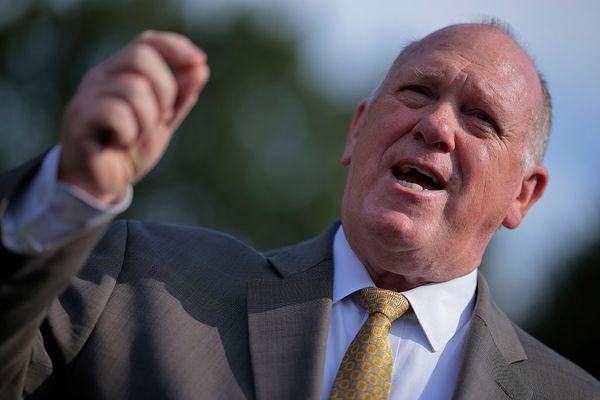
As modelling suggests London could be at risk of a measles outbreak involving tens of thousands of cases, here we take a look at how the situation has arisen and what can be done.
What is measles?
Measles is a highly contagious infectious disease that, as the NHS notes, often begins with cold-like symptoms before a rash develops all over the body. The disease can cause fatal problems including pneumonia and meningitis, with babies and people with weakened immune systems at greater risk. It is also dangerous for pregnant women, as measles can cause miscarriages, stillbirths or premature births.
Isn’t there a vaccine to protect against measles?
There is. In the UK, the measles, mumps and rubella vaccine, known as MMR, is offered to all children, with two doses offering protection for life. However, uptake of the jab fell dramatically after the now discredited gastroenterologist Andrew Wakefield hypothesised in 1998 that it was linked to autism. Study after study has found this is not the case.
Why is there talk of outbreaks?
Lingering reluctance among some parents to vaccinate their children has continued around the world, linked not only to the Wakefield scandal but to far-right political parties. In addition, the Covid pandemic disrupted many routine immunisation programmes, meaning some children missed out on their MMR jabs.
According to the World Health Organization (WHO), in 2021 only 81% of children around the world were given their first dose of measles vaccine and 71% received two doses – the lowest global rates since 2008. The UK Health Security Agency (UKHSA), says uptake of two MMR doses in children aged five in England is 85%.
These rates matter. As the WHO notes, coverage of 95% or greater of two doses of a measles vaccine is needed to create herd immunity, which protects those too young to be vaccinated, have weakened immune systems or are otherwise vulnerable.
“No country is exempt from measles, and areas with low immunisation encourage the virus to circulate, increasing the likelihood of outbreaks and putting all unvaccinated children at risk,” the WHO has said.
There have already been huge surges in measles cases in many countries, with about 9m cases and 128,000 deaths globally in 2021, predominantly in children under the age of five who had not been vaccinated or had not received full vaccination.
What is the situation in the UK?
Measles was considered to be eliminated in the UK in 2016 and 2017, but since 2018 its transmission has become re-established. Cases fell during the pandemic as a result of restrictions but have since risen.
According to UKHSA, in the first six months of 2023 there were 128 cases of measles in England, 66% of which were detected in London. This appears to be linked to particularly low vaccine uptake in some areas of the capital.
As a result, while UKHSA says the risk of a measles epidemic across the UK is low, an outbreak of between 40,000 and 160,000 cases could occur in London.
What should people do?
The main message is to ensure you and any children in your care have had two doses of the MMR vaccine. This can be done by contacting your GP or, in the case of children, checking their red book. Catch-up jabs are being offered in schools, GP practices and community clinics.







